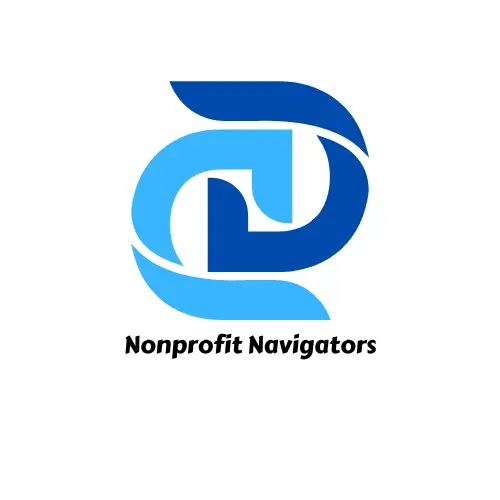Grant writing is an essential skill for nonprofits, but it’s easy to fall into common pitfalls that can weaken your proposals and reduce your chances of funding. Understanding these common mistakes and how to avoid them is crucial for increasing your success in securing grants.
In this blog post, I’ll guide you through the key mistakes to watch out for, provide practical examples and strategies to improve your grant writing, and offer an engaging story to illustrate these points in action.
If you want to improve your chances of winning grants, it’s essential to understand these mistakes and how to avoid them.
1. Not Understanding the Funder’s Priorities
One of the most critical errors in grant writing is failing to understand the funding organization’s goals and priorities.
Many nonprofits make the mistake of submitting generic proposals without tailoring them to the specific interests of the funder. If you don’t align your project with the funder’s mission, your proposal is likely to be rejected.
Imagine a nonprofit focused on literacy applying for a grant from a foundation dedicated to STEM education. While literacy is important, it’s not directly aligned with the funder’s interests.
By reworking the proposal to show how literacy can be enhanced through STEM learning, the nonprofit would stand a much better chance of receiving funding.
Interactive Element:
Poll: Have you ever tailored a grant proposal specifically to a funder’s priorities?
- Yes, always!
- No, I use the same proposal for every funder.
- Sometimes, depending on the grant.
2. Ignoring the Guidelines and Instructions
This might seem like an obvious point, but it’s a mistake that many people make. Every grant application comes with a set of specific instructions that must be followed exactly.
Funders often provide detailed guidelines on how to format your proposal, what information to include, and even word count limits. Ignoring these guidelines can result in an automatic disqualification of your application.
A nonprofit applied for a grant that required a 5-page limit, but they submitted a 10-page proposal. As a result, their application was disqualified before it could even be reviewed. If they had carefully read and adhered to the page limits and other guidelines, they might have had a chance.
3. Lack of Clarity and Focus in the Proposal
A clear and concise narrative is essential in grant writing. Many proposals fail because they are either too vague or too complicated. Funders review multiple applications, and if your proposal is difficult to understand or lacks focus, it’s likely to be overlooked.
A nonprofit applied for a grant but presented their project in a confusing way. Instead of clearly stating what the project was about and how it would address the issue at hand, they included lengthy background information and complex jargon. A clearer, more focused approach that directly addressed the project’s goals would have made their proposal much stronger.
Meet Sarah, the director of a small nonprofit that supports at-risk youth through after-school programs. When Sarah first started writing grants for her organization, she often got feedback about how confusing her proposals were.
She would write long-winded explanations and include all sorts of irrelevant details. After receiving a few rejections, Sarah decided to get serious about her proposal writing. She focused on simplifying her writing, using clear language, and making sure that the funder could quickly understand the project and its goals.
With these changes, Sarah saw a dramatic increase in successful applications. Her story highlights how important it is to present your project in a straightforward, engaging way.
4. Overcomplicating the Budget
The budget section of your proposal is crucial. However, many nonprofit organizations make the mistake of either underestimating or overcomplicating their budget. A budget that’s either too vague or too complex can turn off funders who are looking for clear, reasonable financial plans.
A nonprofit applied for a grant and included a budget that was either too simplistic (without enough detail) or overly complicated (with unclear line items).
The funder didn’t feel confident that the nonprofit could manage the funds properly, so their proposal was rejected.
To avoid this mistake, ensure your budget is both detailed and realistic, breaking down costs in a way that funders can easily understand.
5. Neglecting Sustainability
Many funders want to know how your project will continue after their funding ends. Neglecting to include a sustainability plan in your proposal can signal to funders that the project is not long-term and may not be worth the investment.
You should always include a plan for how you will sustain the project after the grant period is over.
A nonprofit applied for a grant for a youth mentorship program but failed to mention how they planned to continue the program after the initial funding ran out.
The funder wanted to see that the organization had a long-term vision for the program’s sustainability, so they rejected the proposal.
The nonprofit could have strengthened their proposal by including a plan for seeking other funding sources, forming community partnerships, or creating a revenue stream to sustain the program.
Interactive Element:
Quiz: Does your proposal include a sustainability plan for after the funding ends?
- Yes, we have a detailed plan.
- No, we mainly focus on the grant.
- We’re still working on it.
6. Being Too Overly Ambitious
It’s tempting to aim high when applying for grants, but many nonprofits make the mistake of over-promising what they can realistically achieve.
Funders appreciate ambition, but they also want to see a clear, achievable plan. If you claim you can tackle a problem on a national level with a small budget, you may come across as unrealistic or unprepared.
A nonprofit applying for a grant to improve local healthcare services proposed a nationwide expansion of their services, despite only operating in one city with a small budget.
The funders questioned their ability to implement such a large-scale project and ultimately rejected their proposal. A more reasonable approach would have been to focus on expanding services within their city first, with the goal of gradually scaling up.
7. Failing to Show Measurable Outcomes
Funders want to see that their money will have a real impact. Many proposals fail because they don’t include clear, measurable outcomes. Without this, it’s hard for funders to understand how you’ll measure success or determine whether the project is worth funding.
A nonprofit applied for a grant to run a literacy program but didn’t include specific, measurable goals like “Increase reading levels by 2 grade levels” or “Serve 500 students in the first year.”
The funder rejected their proposal because it lacked tangible outcomes. The nonprofit could have strengthened their application by providing clear metrics for success.
Learn from Mistakes and Grow
Grant writing is a skill that can be honed over time. By avoiding these common mistakes, you’ll be in a much better position to submit a compelling proposal that meets the expectations of funders. Remember, the process can be challenging, but with the right approach and attention to detail, you can secure the funding your nonprofit needs to thrive.
Call to Action:
If you found these tips helpful, don’t miss out on more expert advice! Subscribe to the Nonprofit Navigators Newsletter for access to valuable resources, job opportunities, grant opportunities, exclusive webinars, and events that will help your nonprofit grow.
Plus, if you want to take your grant writing to the next level, be sure to check out The Ultimate Guide to Writing Federal Grant Applications. This comprehensive resource is a must-have for anyone looking to improve their federal grant writing skills and increase their chances of securing funding.
Subscribe now and stay ahead in the competitive world of grant writing!




